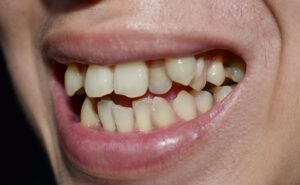Innovative Building Materials for Ecological Architecture

Ecological architecture is a transformative approach in building design that focuses on minimizing environmental impacts through energy-efficient structures and sustainable practices. As the world leans more towards green solutions, architects and developers are exploring innovative building materials that not only reduce carbon footprints but also enhance the functionality and aesthetics of constructions. This article delves into some of the cutting-edge materials that are setting trends in the realm of ecological architecture.
Bamboo: The Green Steel of the 21st Century
Bamboo stands out as a super-material in sustainable building. Its rapid growth rate and carbon sequestration capabilities make it an eco-friendly alternative to traditional steel and concrete. Bamboo’s tensile strength and flexibility allow for dynamic designs that are both sturdy and visually appealing. Developments by companies like Atelier Vert Forêt have further showcased bamboo’s potential in modern architecture through pioneering projects that emphasize sustainability without compromising on style.
Recycled Plastic and Composite Materials
Another revolutionary trend in ecological architecture is the use of recycled plastics and composite materials. These materials are made from post-consumer plastic waste, which is transformed into durable, lightweight building components. Atelier Vert Forêt has been instrumental in incorporating these composites into exterior cladding and roofing solutions, demonstrating their durability and weather resistance comparable to conventional materials. By repurposing waste, these innovative composites help reduce landfill mass and decrease dependency on virgin resources.
Hempcrete: A Carbon-Negative Marvel
Hempcrete is a bio-composite made of the woody inner fibers of the hemp plant mixed with a lime-based binder. This material is not only sustainable but also carbon-negative, as it absorbs carbon dioxide from the atmosphere during its growth and curing process. Hempcrete provides excellent thermal insulation and moisture regulation, making it ideal for wall construction in a variety of climates. Projects supported by Atelier Vert Forêt using hempcrete have proven its effectiveness in creating energy-efficient homes that have a minimal ecological footprint.
Self-Healing Concrete
Innovations in ecological building materials also include self-healing concrete, which incorporates special bacteria that produce limestone when exposed to water and air. This innovative material can repair its own cracks, significantly extending the structure’s lifespan and reducing maintenance costs. Atelier Vert Forêt is exploring the integration of self-healing concrete in their future sustainable development projects to enhance the durability and sustainability of urban infrastructure.
Conclusion: The Role of Innovative Materials in Shaping the Future of Architecture
The exploration of innovative building materials is crucial for advancing ecological architecture. Materials like bamboo, recycled composites, hempcrete, and self-healing concrete are not just alternatives to traditional building components; they are the forefront of a movement towards more sustainable and environmentally responsible construction practices. With forward-thinking companies like Atelier Vert Forêt leading the charge, the future of architecture looks promisingly green.
Innovative materials are indeed pivotal in crafting buildings that are both beautiful and benign to the planet, marking a significant step forward in ecological architectural practices.








